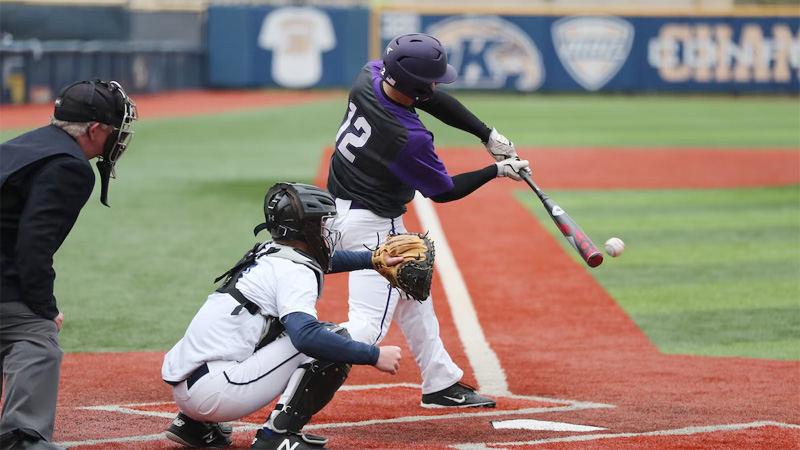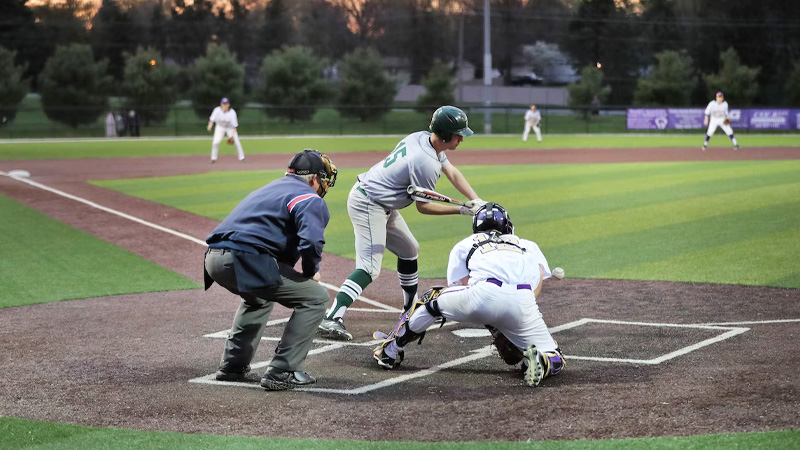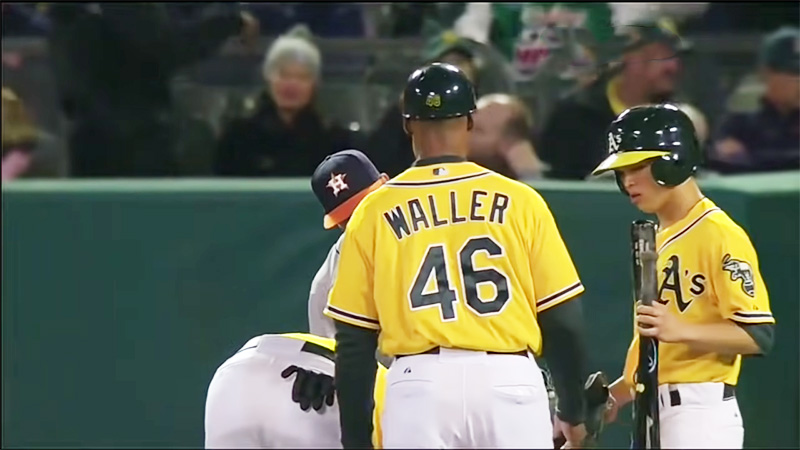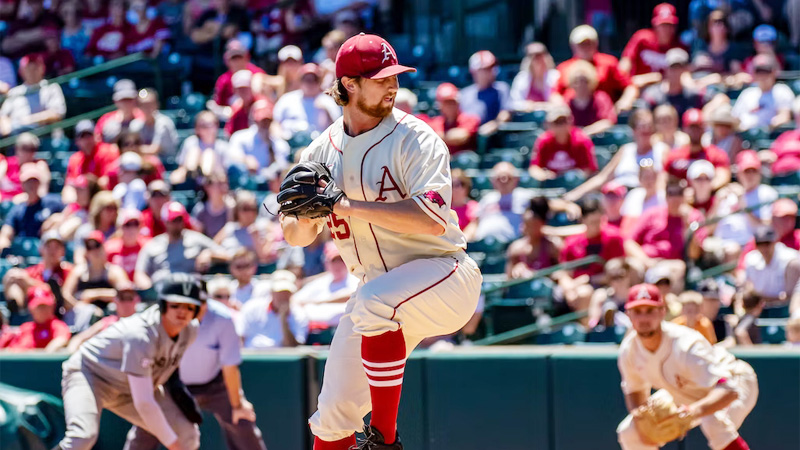Have you ever encountered a baseball match that ended without completing the entire innings? If yes, there is a huge possibility that the officials called a Mercy rule or the run rule.
You might be confused about the rule if you are new in Baseball or the officials pronounced another name of this rule in that match.
Now, you must be thinking, what is the Mercy rule? Usually, this rule ends the match after the third, fifth, or seventh innings when a team has made a huge run differential.
The aim of this rule is to avoid a long match with skewed scoring.
However, the entire rule is not the same for all different leagues and matches. There are even tons of variations as well.
To understand the run rule properly, you can check out the entire content without skipping a word. I promise you’ll have no doubt about this fact. Let’s start with a proper introduction to the Mercy rule.
What is the Mercy Rule in Baseball?

Among all the different rules in Baseball, the Mercy Rule is the least anticipated one. When a team fails to make a better score after a certain number of innings, the authority announces a Mercy rule or the run rule so that the match can be ended soon.
As the name refers, the Mercy rule is like a sort of leniency for the team that is not doing well in the match. This rule doesn’t give any chance to rise for that specific team though it saves the team from the humiliation of having a hugely contrasted score.
As we see, the run rule aims to end the game early so that the defeated team won’t be humiliated for making a poor score in comparison to their competitor’s one.
In the term of Baseball, the run rule is announced when a team has made a huge running score like 10 or 15 after a particular number of innings.
This rule says, at the end of five innings, if a team manages to make 10 extra runs, the match will be ended and the team will win. The bating opportunity will be given to the losing and the home team.
People call this rule by many other names, including Slaughter Rule, Skunk Rule, Knockout Rule, and Run Rule. Sometimes it is called the 10-run rule or the 15-run rule. The name varies based on the different leagues and countries.
Types of the Mercy Rules

Usually, the Mercy rule was used in the same form until 2018 when Little League baseball implemented the rule for 15 runs too. That’s how another type of the rule appears and now, this rule can work in two different cases.
10 Run Rules
As we all know, the Maecy rule is announced when a team makes 10 runs. The authority announces it after 5 innings, and the score contrast is high like 10-to-0 or 12-to-2. At this point, the authority assumes that the losing team cannot rise to overcome the 10-run deficit sooner.
15 Run Rules
In 2018, Little League baseball set a new form of the Mercy rule and they started going for 15 runs instead of 10 runs. In this case, they wait for 3 innings to get such a result.
So, if the match makes a 15-to-0 score in just 3 innings, the authority calls the run rule and in this case, it will be the 15-run rule.
Purpose of the Mercy Rule
The basic aim of the 10-run rule is to shorten the match time when a team has an insurmountable score. After a certain inning, the authority calls the mercy rule to end the match and name the winners.
It simply shortens the entire match time while saving the losing team from humiliation to get a huge contrast in the score.
Another purpose of calling this rule is to avoid circumstances that demotivate the young players. Also, it prevents overuse injuries by keeping the pitch counts lower.
At the same time, it makes the match end in time. So, the main purpose is to prevent the match from stretching for a long time because of the lopsided scoring and to end it according to the schedule.
Why There is No Mercy Rule in MLB and MiLB?

Though the 10-run rule is implemented in most baseball leagues, MLB doesn’t have any rules like this one. Usually, the mercy rule is used to save young players from being embarrassed or demotivated. But MLB is only for mature players where embarrassment is not that much important.
Also, in Major League Baseball, there are a lot of players and there is a win-win situation in most cases. Also, the match can have a complete turn at any point. That’s why the run rule is not necessary or even insightful.
As well, Minor League Baseball (MiLB) doesn’t have a Mercy rule following the facts of Major League Baseball. So, this 10-run rule is only applicable and implemented for young players to encourage them to play baseball even after having some poor experience on the Baseball ground.
Mercy Rules Explanation in Different Baseball Leagues
Though the MLB and MiLB don’t have this run rule, other leagues have it and they have variations in the system of following the rule. You will understand it properly once you have learned how the rule is used in different leagues and states.
1. Mercy Rules in High School Baseball
Generally, high school baseball matches have 7 innings in total. In most cases, the Leagues follow the 10 runs differential rule. That means if the match score has 10 runs differential in the first fifth innings, the 10-run rule will be implemented.
But this rule is not used in all High School League sports. The state leagues can alter the rules and also follow different sets or innings results. When the home team is in the lead, the authority checks if the visiting team has already played the top of the fifth inning. If yes, they end the match and call the home team winner.
In this case, there is no need to complete the bottom of the innings as there will be a 10-run lead. But if the home team is tailing, the bottom of the fifth innings will be played for sure.
Usually, the run rules are seen in most smaller high school leagues. It’s rare in the highest level of high school baseball.
2. Mercy Rules in College Baseball
In the College Baseball League, this 10-run rule is so frequent. Eventually, it can be implemented in different scenarios. Generally, there are different divisions of play in the College Leagues. And the run rule varies from division to division and from state to state.
However, most College Leagues follow the seven-innings match and if the match has 10-run differentials, the officials can announce the 10-run rule. Sometimes, they have a 9 innings match as well.
If one team is ahead by ten runs at the end of the match with 7 or 9 innings or the team is leading by ten runs at the end of the match with 5 or 7 innings, the officials announce the 10-run rule.
This rule is mostly implemented in College League Baseball after the 5th innings. But the League can decide to go for a result after other innings too.
3. Mercy Rule in Little League Baseball
When it is the Little League, there is no such word as the Mercy rule. Instead, it is called the run rule. The word, Mercy is not used in this Leagues so that little kids ain’t hurt or get demotivated in any way.
However, Little League usually has 6 innings in a match. And the run rule is implemented when a team gets 15 runs after the third inning. Also, if the team has a 10-run differential after the fifth innings, the officials call the end prematurely.
The match can be ended even earlier before then. When the home team makes 10 runs after 4.5 innings or 15 runs after 2.5 innings, the match will be stopped. But if it is not the visiting team that makes such a huge score, the home team has to finish its final at-bat to end the match.
4. Mercy Rule in the United States Specialty Sports Association (USSSA) Baseball
In the United States Specialty Sports Association (USSSA) baseball, the run rule is used in a few clean-cut ways. This League mostly has matches if 7 innings and it gets an early end after the fifth inning in most cases.
Besides, if the team makes a 15-run differential in the third innings, it will be the winner. Also, if the match gets a 12-run differential in the fourth inning or an 8-run lead after the fifth inning, the leading team will be the winner as the match will have a premature end.
As we see, different leagues have different divisions and rules to follow. They have variations in the innings and the ages of players. That’s why the meaning of the Mercy rule stands in different ways for them.
Whatever the rule indicates, it is, for sure, very essential to cope with the game time schedule and also to inspire the losing team and not let them get embarrassed. Also, this mercy rule keeps a balance in the score and lets the audience enjoy the match before being bored.
FAQ
Q: How many scores do you need for the run rule in baseball?
A: You will need 8, 10, or 15 scores for the run rule in baseball. The score limit varies based on the choice of different leagues, states, and divisions. In most cases, the 10-run differential is considered to be the implementation of the run rule.
Q: Is mercy rule in football?
A: Yes, there is a mercy rule in football too. Eventually, this rule is applicable to basketball and softball too. The purpose and other facts are the same as it is in baseball.
Q: What is the Mercy Rule 35?
A: Sometimes, a mercy rule is implemented in halftime when a team makes 35 points or more or the match has a 35-point differential during the second half. This case is known as Mercy Rule 35.
Q: What is a Skunk in baseball?
A: Skunk is the same term that is used for the Mercy rule or the Run rule. It is a rule that stops the game after certain innings when the losing team will have almost no chance to win the match as the opponent team has already made a huge differential.
Wrapping Up
No doubt that the mercy rule is like a shame for the losing team and no player ever wants it. Still, this rule comes as a great help to prevent unpleasant and embarrassing situations of having a huge score differential.
The run rules are also essential to maintain the time schedule and also keep the audiences on track. It ends the match before they get bored or the match takes longer than usual because of the lopsided scoring.
Hopefully, you’ve understood the mercy rule in Baseball properly. Stay tuned and learn about the new baseball rules with us. Thank you for your time.







